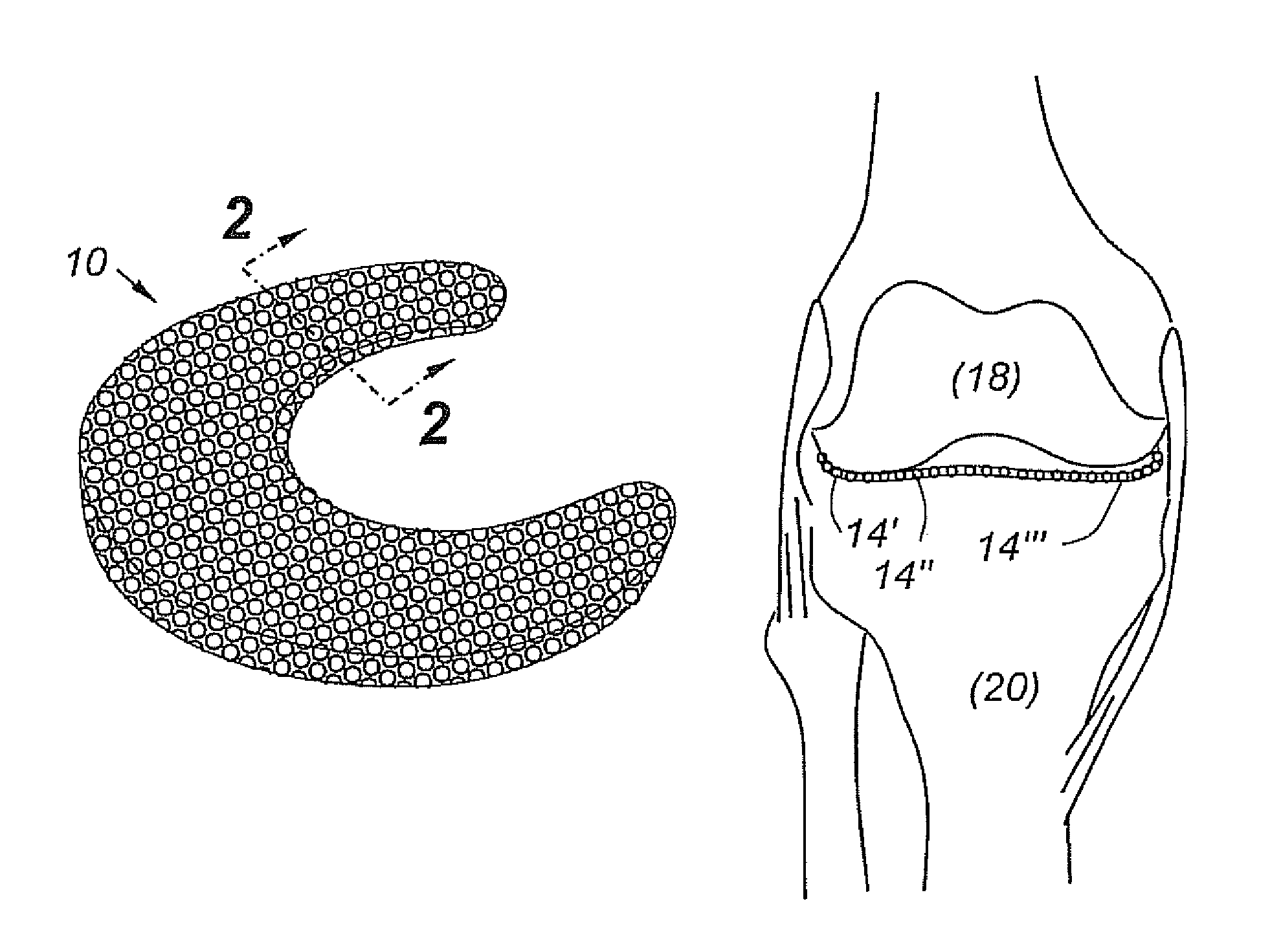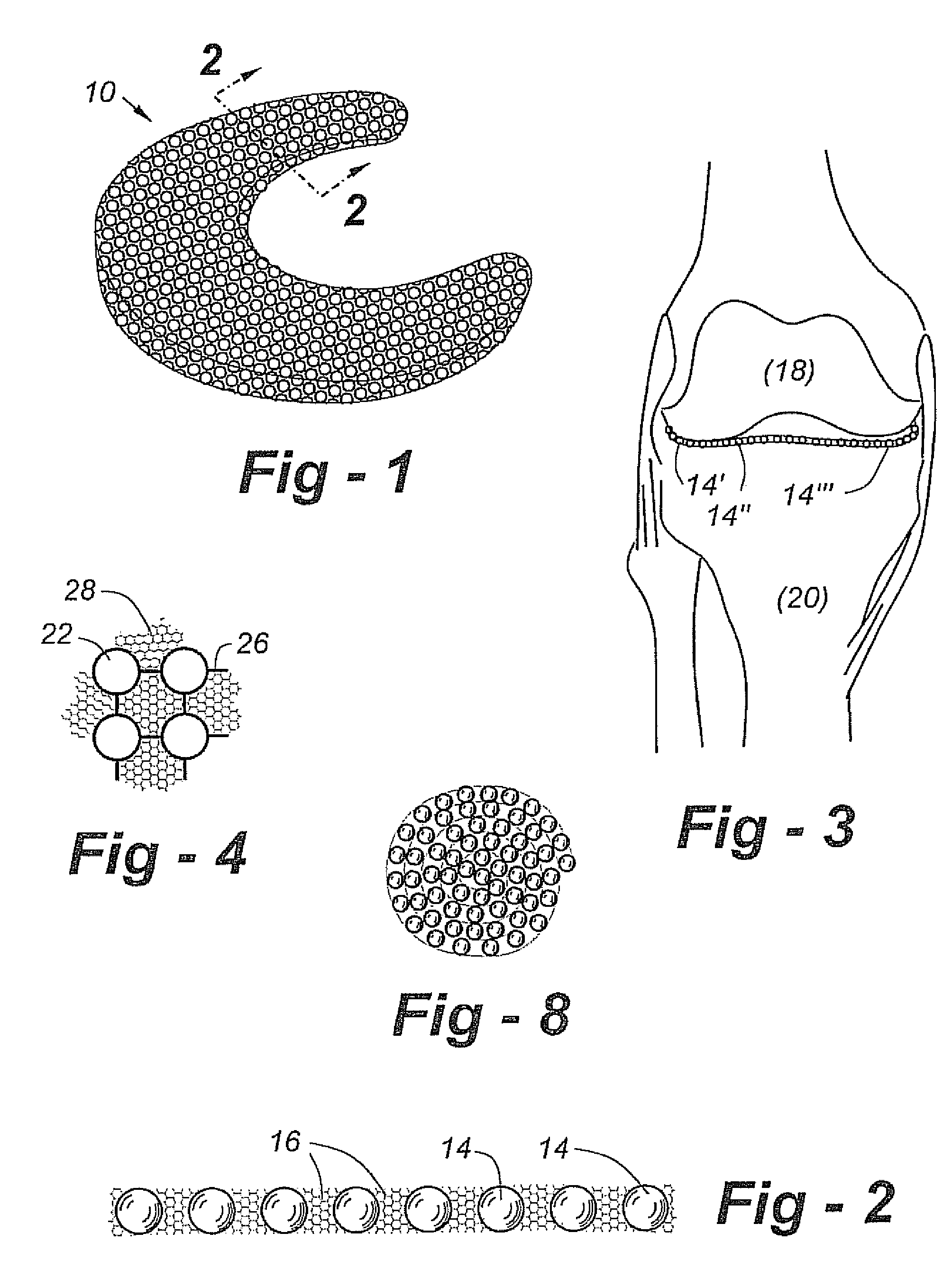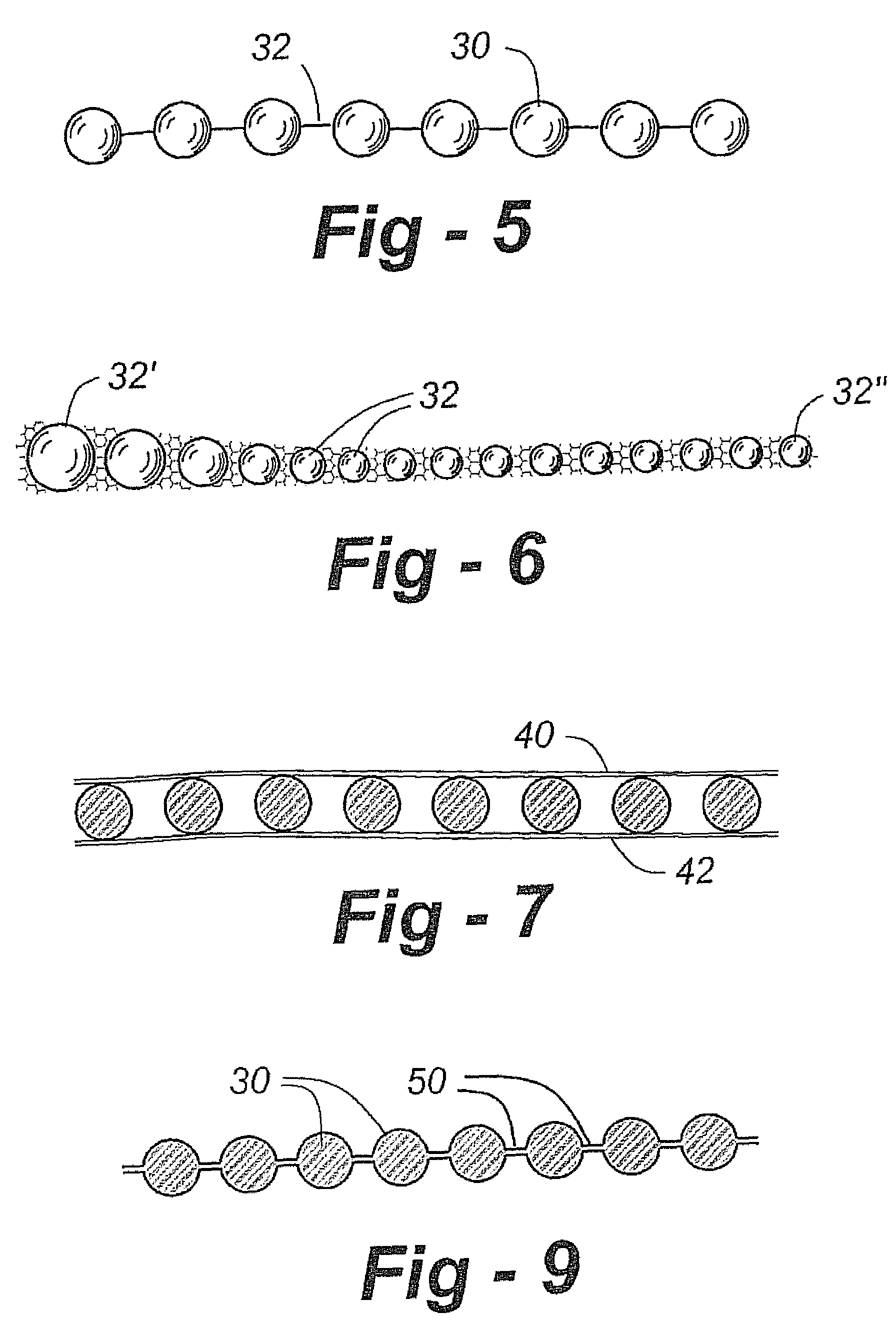Prosthesis for replacement of cartilage
a cartilage and bone joint technology, applied in the field of bone joint prosthesis, can solve the problems of needing to remove the entire meniscus, the failure mode of the knee joint, and the wear of the meniscus, so as to eliminate the wear and friction of the prosthetic meniscus
- Summary
- Abstract
- Description
- Claims
- Application Information
AI Technical Summary
Benefits of technology
Problems solved by technology
Method used
Image
Examples
Embodiment Construction
[0022]While the preferred embodiment of the invention involves use for the replacement of all or part of the cartilage layer of a knee joint, this and other embodiments of the invention can be employed in any of a similar mammalian joint such as a shoulder joint, hip joint, etc., which employs a cartilage sandwiched between two articulating bones which impose both compressive and shear forces on the associated soft tissue.
[0023]FIG. 1 is a perspective view of a prosthesis to replace a meniscus of a knee, not yet inserted between the contact surfaces of femur and tibia bones. The knee employs two similar meniscuses and a prosthesis for a lateral meniscus. The prosthesis comprises a pad generally indicated at 10. The pad, illustrated in cross section in FIG. 2, comprises a singular layer of elements 14, in this case compressible spherical elements having diameters which substantially equal the thickness of the pad 10 so that diametrically opposed points on each of the spherical elemen...
PUM
 Login to View More
Login to View More Abstract
Description
Claims
Application Information
 Login to View More
Login to View More - R&D
- Intellectual Property
- Life Sciences
- Materials
- Tech Scout
- Unparalleled Data Quality
- Higher Quality Content
- 60% Fewer Hallucinations
Browse by: Latest US Patents, China's latest patents, Technical Efficacy Thesaurus, Application Domain, Technology Topic, Popular Technical Reports.
© 2025 PatSnap. All rights reserved.Legal|Privacy policy|Modern Slavery Act Transparency Statement|Sitemap|About US| Contact US: help@patsnap.com



